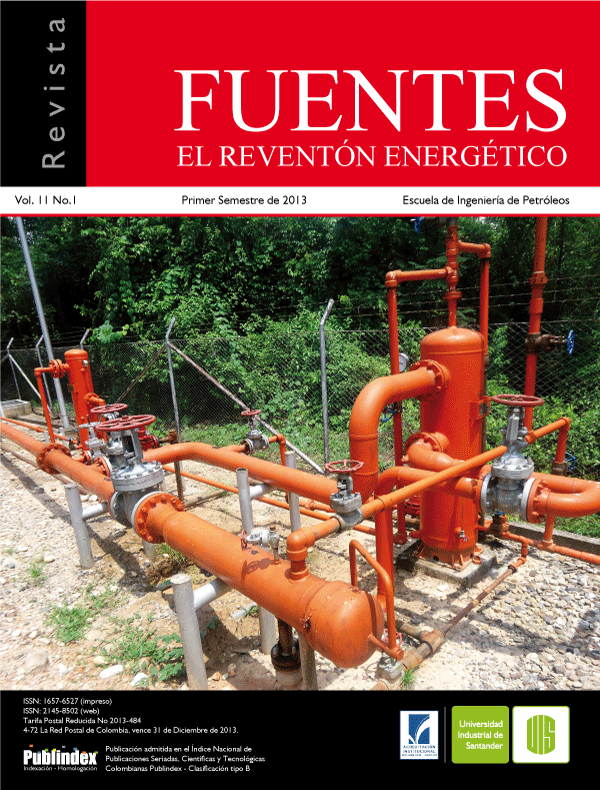Rheological analysis to predict and improve the hydraulic behavior in well drilling
Published 2013-11-06
Keywords
- Hydraulics,
- Rheology,
- Rheological models,
- Standpipe pressure,
- Well ANH-PATIA-1-ST-P
How to Cite
Abstract
The prediction of the well pressure loss and the standpipe pressure (real value of the system pressure loss) are values that differ in the well drilling operation. The methodology that was elaborated in this study has the goal to
decrease that difference using a comparative analysis of rheological models finding the best model to describe the hydraulic behavior and with this, achieve the optimization of simulated value. The methodology was implemented in each section of the well ANH-PATÍA-1-ST-P, and the results could be applied in projects of the same area.
Downloads
References
2. KuMAR, R. “A unified approach to bubble and drop formation”. Chemical Engineer Science. 1971, vol 26, p. 177-1843.
3. ALBARTAMANi, Nasser salim. “Experimental studies on “Foamy oil” phenomena”. Thesis Ph. D. university of Alberta, 2000.
4. GADDis, E. s.; VOGELPOHL, A. “Bubble Formation in Quiescent Liquids under Constant Flow Conditions”. Chemical Engineering science. 1986, vol. 41, núm 1, p. 97-105.
5. RODRiGuE, D. “A general correlation for tha Rise Velocity of single Gas Bubbles”. The Canadian Journal of Chemical Engineering. 2004, vol 82, p. 382-386.
6. BRENNEN, Christopher. fundamentals of Multiphase flows. california institute of Techonology. california: Cambridge university Press, 2005. ISBN 0521 848040.
7. KANTARCi, Nigar; BORAK, Fahir; uLGEN, Kutlu. “Bubble column reactors”. Process Biochemistry. 2005, vol 40, p. 2263-2283.
8. AKAGAWA, K.; sAKAGuCHi, T. “Fluctuation in Void Ratio in two-Phase Flow”. Bulletin JSME. 1996, vol9, p. 104-120.
9. TAHA, Taha; Cui, Z.F. “CFD modeling of slug flow inside square capillaries”, Chemical Engineering Science, 2006, vol 61, p. 665-675.
10. WALLis, G.B. (1969); “One Dimensional Two-phase Flow”, New York: McGraw-Hill, 1969, Cap. 9. ISBN: 07-067942-8.
